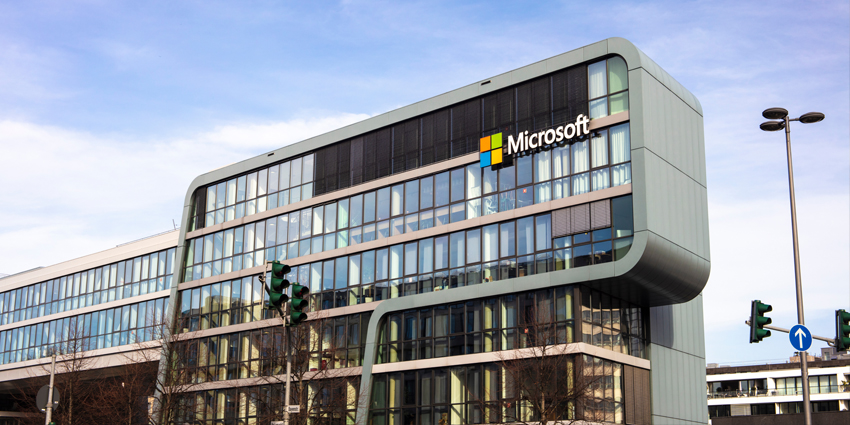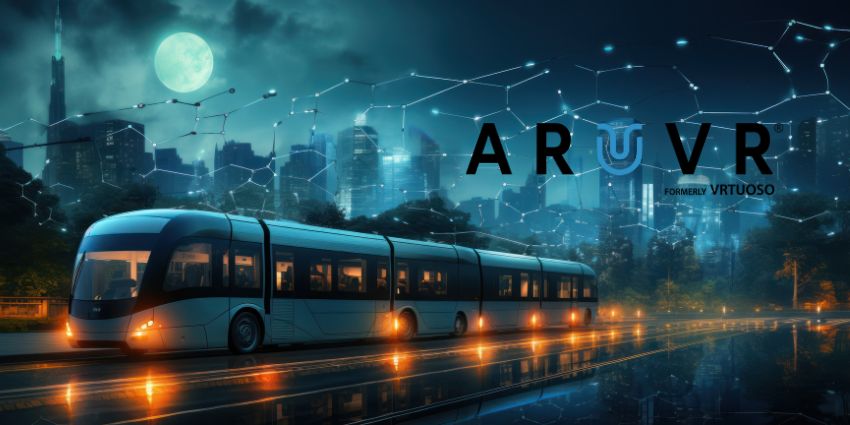Will 2024 be the year for the industrial Metaverse? A familiar question that echoes questions asked by the XR space at the start of 2023.
This time last year, Meta promised that the Metaverse would launch immersive remote communication into the mainstream. In October 2022, Mark Zuckerberg, the CEO of Meta, noted that “more people work in distributed teams now and being able to share a space with your co-workers and feel like you’re really together is still missing.” however, Meta did not reach this goal in 2023; instead diverting towards MR and smart glasses.
However, while being a potentially fruitful space for some enterprise and consumer use cases, the Metaverse did not take the world by storm as Zuckerberg thought. If anything, pundits – XR enthusiasts and beyond – openly mocked some elements of Meta Horizon Worlds, namely stemming from its graphics, monetization terms, and lack of users.
The XR and Metaverse markets seemed patchy at the start of 2023, following what many saw as a failed attempt by Meta to introduce immersive worlds to a broader range of users – outside of the niche users of Rec Room and other dedicated services. Is the Metaverse dead? The truth is the Metaverse never even got started.
The Metaverse fell victim to marketing campaigns that greatly muddied the optics of the market. At the start of 2023, many Metaverse vendors promoted how immersive worlds could completely change how the world works and lives. Realistically and specifically, the Metaverse does not only refer to a series of immersive worlds.
The Metaverse is better defined as a digital framework that provides users with various immersive and spatial applications that promote interconnectivity and shared digital services. For example, a Metaverse platform could provide users with a series of remote MR collaboration applications.
Metaverse platforms are not reserved for fully immersive VR worlds but for any XR application that promotes communication beyond a 2D Zoom call, such as a service that enables workers to collaborate over RT3D digital twins in a 360 computing environment – accessible via headsets, smartphones, and other devices.
Following this period of Metaverse criticism, firms such as Apple avoided the terminology for their own MR device, and Meta barely referred to its Horizon service during Connect 2023.
But the Metaverse is not dead; the industry is just refining it. Now, in H2 2023, leading towards the new year, the industrial Metaverse is the new preferred terminology referring to shared spatial applications – not just the immersive worlds of old but more straightforward and more accessible MR applications also.
Both Microsoft, AWS, and Meta are sailing the industrial Metaverse ship into 2024, with leading Meta representatives urging enterprise clients to adopt immersive services today.
Meta uses the industrial Metaverse framework that Microsoft revealed slowly across H2 2023. But will Microsoft’s investment into the industrial Metaverse pay off? And will Meta and other industrial Metaverse vendors see success in 2024?
It appears that outside of Apple’s spatial computing vision, the XR market is riding on the success of the industrial Metaverse. If the technology fails, it may lead to a fatal fallout for the XR market, potentially giving Apple a massive lead in the immersive space race as it promotes its personal brand of shared immersive computing.
But how did Microsoft get to this point? How did the firm move from a failing Hololens 2 division to potentially leading the entire XR space with its rebranded roadmap? It started last year.
From HoloLens 2 to the Industrial Metaverse
Following the Hoirozn Worlds era of the Metaverse in late 2022 and early 2023, the industrial Metaverse age of 2024 is incoming, and some firms are leveraging the technology today – with Microsoft boasting an extensive range of enterprise end users.
However, Microsoft’s XR journey did not look as bright at the start of the year.
In June 2022, reports of unethical behaviour within the Hololens team led to the resignation of Microsoft’s former Head of Hololens and MR, Alex Kipman. As a result, the responsibility for managing and developing Hololens projects shifted to Microsoft’s Windows & Devices division, with many Hololens engineers moving to Meta in the fallout.
However, months later, Microsoft’s Vice President of MR, Scott Evans, confirmed that Microsoft was working on immersive services despite the shake-up. Evans also explained that a new version of Hololens was in the works and would be released once the technology was ready.
Microsoft noted that they would only launch a new headset once there was a significant performance improvement compared to previous versions. Evans said at the time, “No one wants to be obsoleted for 10% better capabilities. They don’t need a successor yet, but they want to know it will be there at the right time.”
The Vice President explained that to ensure the success of the next device, the firm is currently examining the specifications and challenges faced by clients that can be addressed by the Hololens 3; these include display, tracking, sensors, and battery life.
Microsoft’s immersive team underwent further reorganizations when it closed its Altspace VR Metaverse platform. Microsoft acquired The service in 2017 after its debut in May 2015. The Metaverse service remained popular among enterprise and consumer end-users before facing steep competition. Microsoft chose to close the service on March 10, 2023.
Following the closure of Altspace VR, Microsoft repositioned its Altspace VR team to the Mesh platform – now an industrial Metaverse product – that provides the “widest opportunity to all involved, including creators, partners, and customers.”
At the time of Kipman’s departure and Altspace VR’s closure, it seemed like two nails in the Microsoft XR coffin – doubly so with the firm’s quick adoption of genAI services. However, this couldn’t be further from the truth.
The two events marked a critical point in Microsoft’s XR journey. Both events led Microsoft to restructure its internal XR divisions, leading to its current industrial Metaverse roadmap.
Where XR and AI Merge
During Microsoft Inspire 2023, an event showcasing the company’s latest innovations, Microsoft hinted at an industrial Metaverse initiative as part of its AI Cloud Partner Program. This program sees Microsoft partnering with leading technology companies to drive growth and innovation towards enterprise-grade AI. As a part of this program, Microsoft will now support the development of industrial Metaverse solutions and related technologies.
The partnership aims to innovate AI, Cloud, and Metaverse solutions to enhance enterprise end-user productivity, resiliency, and sustainability. It will also offer a “curated learning path” to equip end-users with resources to introduce workplace XR technology.
To empower workforces with an industrial metaverse vision, Microsoft is leveraging the following focus technologies:
- AI and ML, which includes Microsoft Copilot and Azure OpenAI.
- Analytics and Data, including Azure Databricks, Synapse Analytics (2024), Microsoft Fabric (2024), Microsoft Purview, and Power Platform.
- Mixed Reality, including D365 Field Service, D365 Guides, D365 Remote Assist, HoloLens 2, and Azure Maps.
- Simulation via Microsoft’s Azure HPC product.
- Cloud to Edge, including Azure Arc, Azure Kubernetes Services, AAD, Defender for Cloud, Microsoft Sentinel, and Azure IoT.
- Finally, Microsoft will include Azure Digital Twins in its industrial metaverse ecosystem.
Microsoft’s launch of its industrial Metaverse roadmap as part of the AI Cloud Partner Program is an apparent move to improve its immersive technology by integrating its deep OpenAI investments.
In August, Lili Cheng, Corporate Vice President of Business Applications and Platforms at Microsoft, wrote on the keys to MR success for frontline workers, including integrating MR and AI to establish the industrial Metaverse – lending a hand in optimizing frontline operations.
The Microsoft exec mentioned the importance and roles of integrated technologies such as digital twins, which can be “further enhanced by AI,” saying:
Mixed reality is the eyes and ears of AI. Delving into operation nuances for personalized, in-depth learning becomes easier. When integrated, mixed reality and AI accelerate worker training, shortening steps and supplying users with the working knowledge they need for the task at hand.
Since the launch of Microsoft’s industrial Metaverse roadmap, the firm is readying up for the general release of multiple XR solutions at the start of 2024 – which deeply integrate AI into each service,
2024: The Year of the Industrial Metaverse
Microsoft’s introduction of its industrial Metaverse solution came quietly. However, as the following months came about, Microsoft worked hard to scale its roadmap leading into the new year and towards Ignite 2023.
During the Ignite 2023 opening keynote, Microsoft CEO Satya Nadella spoke on the relationship between AI and MR, noting how the emerging technology affects real-world enterprise use cases.
Nadella said:
It’s pretty amazing when you bring these two technologies (AI/MR) together and this stuff is real today its has been deployed in preview at Siemens Energy, Chefron – its great to see the power and i think its goning to be even more powerful in the years to come.
Moreover, at Ignite 2023, the firm explained how its industrial Metaverse roadmap would deliver products ready for the enterprise.
Microsoft announced that it will introduce new avatars to its popular Teams application in January 2024. Microsoft is introducing a suite of no-code tools and integrated Unity features to power the avatar system. This will allow enterprise customers to create bespoke immersive spaces such as employee events, training, tours, and product showcases that can be tailored to business needs.
XR project managers can choose from a collection of pre-built immersive environments available via the Mesh platform and use no-code/Unity tools to customize the space and create a template that an entire organization can access and use.
Microsoft will reveal more details on the Mesh for enterprise service as the January 2024 general availability release approaches, including additional features such as speaker enhancements, attendee engagement options, and interaction.
Microsoft has also announced updates to its Dynamics 365 platform, incorporating cutting-edge technology like AI, MR, IoT, and others to provide users with new Metaverse features that provide assistance reality services – not wholly transformative ones.
In addition, Microsoft has announced that frontline workers using Hololens and Dynamics 365 can access work order information by communicating with Copilot through Microsoft Teams starting this month. Moreover, Dynamics 365 Field Service customers can now access Dynamics 365 Guides and Dynamics 365 Remote Assistance for free.
Will the Bet Pay Off?
Microsoft is betting big with the industrial Metaverse. The success of its roadmap may reveal the future of Microsoft’s investments in the space. While a firm like Microsoft can afford to lose money researching into immersive workplace solutions, following the hurdles of early 2023, it is safe to assume that Microsoft would like to see some adoption success in January when it debuts its first lineup of XR services.
On the other hand, the industrial Metaverse is not the only XR investment Microsoft has its money in.
Microsoft is still working on providing enterprise clients with HoloLens 2 support and devices such as HP, Sanofi, and SNC Lavalin.
On the other hand, Microsoft is carefully supporting MRTK and SDK for creating HoloLens 2 applications.
So, while the industrial Metaverse gamble for Microsoft could lead to massive positives or a marketplace defeat, it should be noted that the firm has a deep backup to keep itself afloat in the developing market.
Moreover, with its OpenAI partnership, it appears that Microsoft will never be far behind in the emerging technology landscape.







